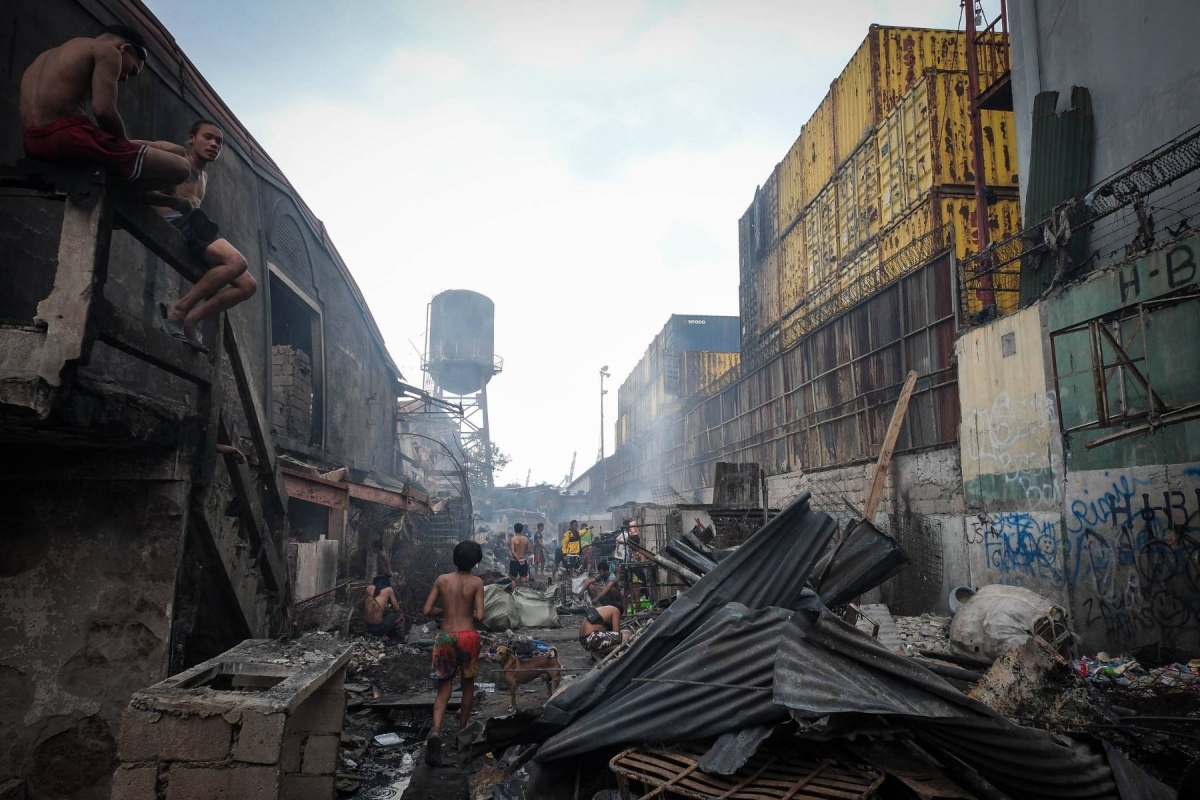The aftermath of the fire has left the affected families in a state of shock and despair. Many of them are now left without a roof over their heads, forced to seek temporary shelter in evacuation centers and rely on the support of local government and non-governmental organizations. The trauma of losing their homes and belongings is immeasurable, as they grapple with the reality of starting from scratch.
The impact of the fire goes beyond the physical destruction of properties. It has disrupted the lives of the affected individuals and families, causing emotional distress and uncertainty about the future. Many of them have lost not only their homes but also their livelihoods, as the fire engulfed nearby businesses and establishments. The loss of jobs and income further compounds the challenges they face in rebuilding their lives.
The government and various organizations have swiftly responded to the crisis, providing immediate assistance such as food, water, and medical aid to the affected families. Evacuation centers have been set up to accommodate those who have been displaced, offering a temporary safe haven amidst the chaos. Efforts are also being made to provide psychosocial support to help the survivors cope with the trauma they have experienced.
As the affected families try to piece their lives back together, the road to recovery will be long and arduous. Rebuilding homes, replacing lost possessions, and finding stable employment are just some of the challenges they will face in the coming months. The support of the community, both locally and internationally, will be crucial in helping these families regain their footing and rebuild their lives.
In the wake of this devastating incident, it is important to reflect on the importance of fire safety and prevention. Fires can strike at any moment, and being prepared can make a significant difference in minimizing the damage and saving lives. Communities must come together to raise awareness about fire safety measures, such as installing smoke detectors, having fire extinguishers readily available, and conducting regular fire drills.
The fire in Tondo, Manila serves as a tragic reminder of the vulnerability of communities to such disasters. It is a call to action for both individuals and authorities to prioritize fire safety and prevention, ensuring that measures are in place to protect lives and properties. Only through collective efforts can we strive to prevent such devastating incidents and provide support to those affected when they do occur.
Response and Support for the Affected Families
In the wake of this tragic event, it is heartening to see the community coming together to support those affected. Local authorities, non-governmental organizations, and concerned citizens have rallied to provide assistance to the displaced families.
The government, through the Bureau of Fire Protection, is conducting an investigation to determine the cause of the fire. This is an essential step in preventing similar incidents in the future and ensuring the safety of residents. It is crucial that the findings of the investigation are made public, allowing for transparency and accountability.
Various organizations and individuals have also stepped up to offer aid to the affected families. Donations of food, clothing, and other essential items are being collected and distributed to help alleviate the immediate needs of the displaced individuals. Additionally, temporary shelters are being set up to provide a safe place for those who have lost their homes.
It is important to recognize the resilience and strength of the affected families. In the face of adversity, they have shown remarkable courage and determination. However, it is vital that the support and assistance provided to them are sustained in the long term. Rebuilding lives and communities takes time, and ongoing support is crucial for the affected families to regain stability and rebuild their lives.
To ensure the long-term well-being of the affected families, various support programs have been initiated. These programs aim to provide not only immediate relief but also sustainable solutions for the families to rebuild their lives. Counseling services are being offered to help individuals cope with the trauma and loss they have experienced. Financial assistance programs are being implemented to help families secure new housing and meet their basic needs. Job training and employment opportunities are being provided to help individuals regain financial independence.
In addition to the government and non-governmental organizations, the community has also played a significant role in supporting the affected families. Fundraising events, charity drives, and volunteer efforts have been organized to raise funds and provide hands-on assistance. The outpouring of support from neighbors, friends, and even strangers has been overwhelming and has given hope to the affected families during this difficult time.
It is important to remember that the road to recovery for the affected families will be a long one. The impact of such a tragic event goes beyond the physical loss of homes and belongings. Emotional healing and rebuilding of lives will take time, patience, and continued support. It is crucial for the community to remain engaged and committed to the well-being of the affected families, not just in the immediate aftermath of the disaster, but for years to come.
Another important aspect of fire prevention is the installation and maintenance of fire detection and alarm systems. These systems are designed to detect smoke or heat and alert occupants of a building to evacuate in case of a fire. Regular inspections and testing of these systems are necessary to ensure their proper functioning.
In addition to fire detection systems, fire suppression systems are also vital in preventing the spread of fires. These systems, such as sprinklers or fire extinguishers, can help control or extinguish fires before they become uncontrollable. Proper training on how to use these systems should be provided to individuals to ensure their effectiveness.
When it comes to fire safety, it is not just the responsibility of individuals or authorities, but also the responsibility of businesses and organizations. Employers should have comprehensive fire safety plans in place, including evacuation procedures, designated assembly areas, and regular fire drills. Employees should be educated on these plans and trained on how to respond in case of a fire.
Furthermore, it is important for individuals to be aware of potential fire hazards in their homes and take steps to mitigate them. This can include keeping flammable materials away from heat sources, regularly checking electrical wiring for any signs of damage, and ensuring that smoke alarms are installed and working properly.
Lastly, it is crucial to emphasize the importance of fire safety in public spaces such as schools, hospitals, and shopping centers. These places often have a high occupancy rate, making it essential to have robust fire safety measures in place. Regular inspections, staff training, and clear evacuation routes are necessary to ensure the safety of everyone.
In conclusion, preventing fires and ensuring safety requires a multi-faceted approach that involves education, enforcement of regulations, collaboration, and individual responsibility. By taking proactive steps and implementing comprehensive fire safety measures, we can reduce the risk of fires and protect lives and property.







